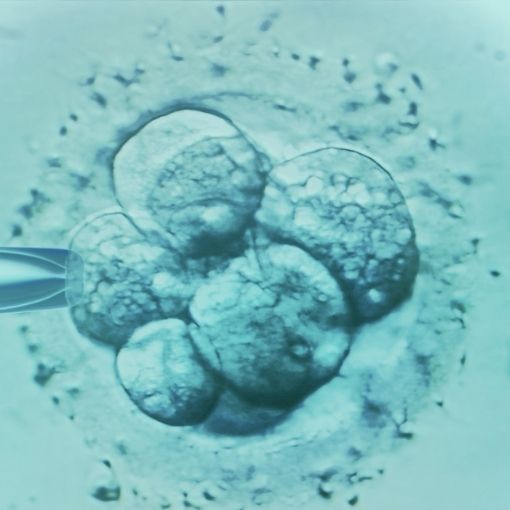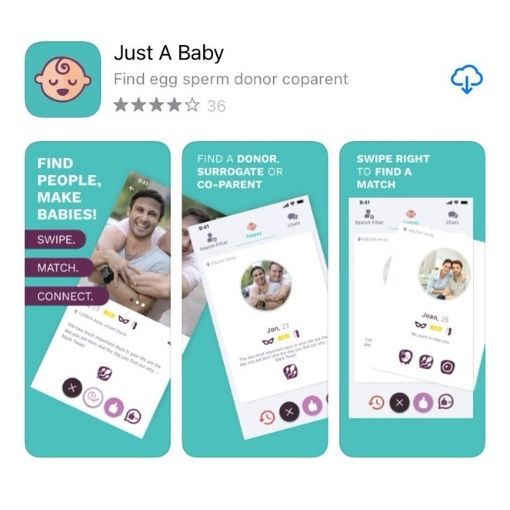As a woman, understanding the ins and outs of ovulation, what it is and how it works, and when and why it happens can be extremely helpful. It can be useful whether you are trying to conceive (TTC), trying to avoid pregnancy or if you simply want to be more in tune with your body and how it works.
It’s likely that before you started ttc, your knowledge of ovulation was pretty basic. You ovulate and have a period if the egg isn’t fertilised; this happens roughly once a month. In all honesty, that’s probably all you needed to be aware of until you decided to try for a baby.
However, when trying to conceive, knowing when you ovulate becomes super important. Doing the baby dance during your most fertile time of the month can significantly increase your chances of getting those two little pink lines that indicate a positive pregnancy test. So we’ve put together this guide to break down everything you need to know about ovulation, from what it is to how you track it when you are trying for a baby.
What Is Ovulation?


Ok, so in a nutshell, ovulation is the process in a female’s menstrual cycle in which an ovary releases a mature egg (ovum) into the fallopian tube. This usually occurs around the midpoint of the menstrual cycle. So, around 14 days before the next expected period. Every month an egg will mature and be released by the ovary. And make its way down the fallopian tube towards the womb.
Whilst this is happening, the uterus lining is thickening in preparation for housing a fertilised egg. If conception doesn’t occur, the womb lining sheds, and you get your period.
Ovulation is a necessary process for fertilisation to occur. This is because sperm can only fertilise an egg released from the ovary. If fertilisation occurs, the egg is then implanted in the uterus and begins to develop into a pregnancy.
When does Ovulation occur?
Ovulation typically occurs around the middle of a woman’s menstrual cycle, usually between day 11 and day 21 of a 28-day cycle. However, the exact timing of ovulation can vary from woman to woman. It can also vary from cycle to cycle in the same woman – just to make the process even harder to understand!
Ovulation is triggered by a surge of luteinising hormone (LH) from the pituitary gland in your brain. This usually occurs about 24 to 36 hours before the egg is released from the ovary. Women trying to conceive can use ovulation prediction kits or track their basal body temperature and cervical mucus changes to help determine when they are ovulating. We’ll go into more detail about this later!
Phases of ovulation
Understanding the stages of ovulation can be helpful if you are trying to conceive or want to learn more about reproductive health. So lets take a moment to explore the different stages of ovulation and what happens during each phase.
Stage 1: Follicular Phase
The follicular phase is the first stage of the menstrual cycle and begins on the first day of your period. During this phase, the pituitary gland releases follicle-stimulating hormone (FSH), which causes several follicles in the ovary to begin maturing. These follicles contain immature eggs, and only one will typically reach full maturity and be released during ovulation. The follicular phase lasts around 10-14 days.
Stage 2: Ovulatory Phase
The ovulatory phase is the stage where the mature egg is released from the ovary. It usually occurs around day 14 of the menstrual cycle but can vary depending on the length of your cycle. During this phase, the pituitary gland releases luteinising hormone (LH), which causes the dominant follicle to rupture, releasing the mature egg into the fallopian tube. The egg will only survive for about 24 hours after ovulation, so it must be fertilised by sperm during this time.
Stage 3: Luteal Phase
The final stage of the menstrual cycle is when the ruptured follicle that released the egg turns into a structure called the corpus luteum (a mass of cells that forms in the ovaries). This structure produces the hormone progesterone, which helps to thicken the uterine lining in preparation for pregnancy. If pregnancy doesn’t occur, the uterine lining will shed, resulting in a woman’s period.
This stage can also cause premenstrual symptoms like bloating, headaches, aches and pains, food cravings and mood swings. These can annoyingly be easily confused with some of the early signs of pregnancy!
Ovulation symptoms
Just like we can experience PMS when our period is approaching, it’s also possible to have some symptoms when we ovulate. It’s worth noting that not everyone shares the symptoms listed below when ovulating; just because you don’t have them doesn’t mean you are not ovulating!
- Changes in cervical mucus: The consistency and colour of cervical mucus change during the menstrual cycle. Around ovulation, the mucus becomes thin and slippery, like raw egg whites, to help sperm swim through it and reach the egg.
- Basal body temperature (BBT) changes: BBT is the body temperature taken first thing in the morning before getting out of bed. It typically rises slightly after ovulation due to an increase in the hormone progesterone.
- Pain or discomfort: Some women may experience mild pain, cramping and discomfort in the lower abdomen, back, or sides around the time of ovulation.
- Breast tenderness: Some women may experience breast tenderness or swelling due to hormonal changes during ovulation.
- Increased sex drive: Hormonal changes during ovulation can also lead to an increased sex drive. The body’s way of telling you it’s time to baby dance!
When is a woman most fertile?
So, we know the egg can only survive for around 24 hours after release, but sperm can keep going for up to 7 days. What this means is that it’s possible for a couple to conceive if they have sex a week before the egg is actually released. Fertile days are all the days that a woman can fall pregnant via unprotected sex.
This means that during each monthly cycle, a woman will have an increased chance of becoming pregnant when they have sex a day or two on either side of ovulation.
Monitoring Ovulation
When trying to conceive, knowing when you ovulate can seriously increase your chances of falling pregnant. There are a few tried and tested ways to track ovulation, including:
Basal Body Temperature Charting
Basal body temperature (BBT) charting involves taking your temperature first thing in the morning before getting out of bed. Your basal body temperature tends to rise slightly after ovulation due to the hormone progesterone. By tracking your temperature over several months, you can identify when ovulation occurs in your cycle. You will need to purchase a basal thermometer, which is more sensitive than a regular thermometer and can detect small changes in temperature.
To chart your BBT, take your temperature at the same time every morning before getting out of bed. Then, record your temperature on a chart or in an app. Your temperature will likely fluctuate throughout your cycle, but you should see a slight rise after ovulation. After several months of charting, you may notice a pattern and can use this to predict when ovulation is likely to occur.
Ovulation Predictor Kits
Ovulation predictor kits (OPKs) detect the surge in luteinising hormone (LH) that occurs 24-48 hours before ovulation. LH is a hormone produced by the pituitary gland and triggers ovulation. OPKs are available over-the-counter at most pharmacies and online and are easy to use.
To use an OPK, follow the instructions on the package. Typically, you will need to start testing a few days before you expect ovulation to occur, based on the length of your cycle. You will need to collect a urine sample and dip the test strip into the urine. The test will indicate whether the LH surge is detected or not. If the surge is detected, ovulation will likely occur in the next 24-48 hours. So it’s time to get baby dancing!
Cervical Mucus Monitoring
Cervical mucus monitoring is about tracking changes in the amount and consistency of your cervical mucus. Around ovulation, your cervical mucus becomes thin, clear, and stretchy, similar to egg whites. This mucus helps sperm swim through the cervix and into the uterus to reach the egg.
To monitor your cervical mucus, check it daily by wiping with toilet paper before urinating or using your fingers to check. Then, record the changes in a chart or app. You may also notice a feeling of wetness or lubrication around ovulation.
Ovulation charts and tracking apps
There are plenty of super helpful apps, calculators and trackers to track ovulation and your fertile window. In fact, you can check out Hoopsy’s very own ovulation calculator here based on the date of your last period!


It’s worth noting these trackers work on averages and length of cycle, which can vary from individual to individual and change month to month, so they will never be entirely as accurate as some of the other ovulation monitoring methods. However, they can still be pretty helpful and a cost-effective way to start monitoring your cycle when TTC.
What factors can affect ovulation?
There are a few factors that can affect ovulation:
- Age: A woman’s fertility starts to decline as she gets older, and the likelihood of irregular ovulation increases after the age of 35. This makes ovulation trickier to predict.
- Hormonal imbalances: Any hormonal imbalances, such as thyroid disorders, polycystic ovary syndrome (PCOS), or high prolactin levels, can affect ovulation.
- Weight: Both being underweight and overweight can interfere with ovulation. Women with a body mass index (BMI) below 18 or above 30 are more likely to ovulate irregularly.
- Stress: High-stress levels can affect the hormonal balance in the body, which can interfere with ovulation.
- Medications: Certain medications, such as chemotherapy drugs or hormonal contraceptives, can have an impact.
- Smoking and alcohol consumption: Both smoking and excessive alcohol consumption can negatively affect ovulation.
- Environmental factors: Exposure to toxins, such as pesticides and pollutants, can interfere with ovulation.
How long after ovulation can I take a pregnancy test?
Most home pregnancy tests, including Hoopsy’s, recommend waiting until the first day of your missed period before taking a home pregnancy test. This is when you are most likely to get an accurate result. When you start tracking your cycle, it will mean roughly a two-week wait from the time you ovulated to taking a pregnancy test.
We get that many people want to test as soon as possible, and two weeks can feel like a crazy long time when you are desperate to know if your baby dancing efforts worked. That’s why many tests (yes, including ours) allow you to test up to 5 days early with a high degree of accuracy: 95% when you test 5 days early, which increases as you get closer to your period.
Ovulation tracking can help you to determine precisely when to take a pregnancy test, which is excellent if you have irregular cycles which are harder to predict without tracking.
Main takeaways
If you are trying to conceive, understanding the signs of ovulation and how to track it can be super helpful. Taking the time to learn about your body and its patterns can also make you feel more in tune with yourself.
Monitoring your ovulation cycle means you can confidently predict your most fertile days to increase your chances of getting pregnant. Want to talk about Ovulation, tracking or anything else related to fertility? Join us in the Hoopsy community for advice and support from the Hoopsy team and our fantastic members! If you found this guide useful, we would love to hear your comments here or on social media!




